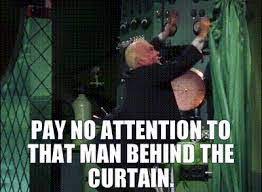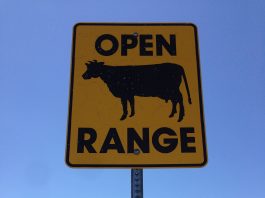I’ve been thinking a lot about failure lately, especially my own failures, thanks to the four-part series from Freakonomics, “How to Succeed at Failing.” (I shared links and some information about the series at On Pasture here.) It turns out there are a lot of reasons for failure and a spectrum of failures ranging from blameworthy to praiseworthy. But for me, the theme tying all the episodes and types of failures together is this: We don’t talk about our failures. That means that others may have to make the same mistakes, slowing our improvement as a community and a society.
So today, I’m going to tell you about one of my failures: On Pasture the business.
Now, don’t get me wrong. I think that On Pasture was a great success at providing really helpful information to graziers. There’s not a thing about the articles we published or the quality of our work that I question or would change. But, early on we made some decisions that made it difficult for On Pasture to succeed as a business. They’re decisions that are similar to what I see lots of folks make and they’re the results of being overly-optimistic and enthusiastic. I hope its helpful for you to take a look behind the scenes and to learn from my mistakes.

In the beginning…
I started working with farmers and ranchers in 1991 and one thing that always bothered me was how many times I saw them get taken by fads that cost them time and money and didn’t work at all. It was especially grating to see at the ag conferences I went to. I’d see scientists stand up, and in their complicated, often boring way, tell folks something really helpful and beneficial. Then a person selling something less than helpful would follow and, because they were generally so charismatic, the audience would buy in to this new fad.
It just seemed wrong to me and I wanted to help. My idea was to create a publication to translate science and experience into practices that graziers could use to be more successful both environmentally and economically. It would do the work for them of separating the wheat from the chaff so they wouldn’t be taken in by snake oil. And because of the service we were providing, readers would support this free publication by sending us whatever they could when we held fund drives.
I painted a beautiful picture in my head of what this publication would look like and how it would function. Then I presented this vision to a group of friends while we were at a conference in New York. They all agreed wholeheartedly that it was a beautiful vision, that the world needed something like this, and they would support me in accomplishing it.
My friend Rachel was excited by the vision and she signed on as my partner. Together we began the work of seeing if we could turn the vision into reality. First, we checked in with our large network of graziers, asking them if they’d like to have this kind of publication. Ninety percent of them said, “Yes, I’d read that!” Next, we studied where we’d get articles. Initially, we thought of On Pasture as a grazing information aggregator. While we’d write some of the articles, many of them would be drawn from other resources across the internet. That would make the workload manageable and reduce costs. To grow readership, we put out flyers about the upcoming publication and gathered emails at conferences we attended. And then, on March 18, 2013, we published our first issue of On Pasture.
It was so exciting to see the number of reads of those first articles go up and up. Rachel lived in New York and I was in Colorado, and we called each other every hour to giggle about the numbers. We got so excited that we decided that instead of doing this monthly, we’d do it weekly!
Our goal was 10,000 readers that first year. We doubled that. By 2017 we were seeing 100,000 readers a month from across the globe. We were a big deal in the grazing world.
But we were failing.
Here’s where it went wrong.

Did you miss that part where we wrote a business plan? No, you didn’t because we didn’t write one. We didn’t do any budgeting. We didn’t even talk about how much we would be paid for our work, or what we might have to pay anyone else. We just blindly relied on my faith in humanity, that if we gave them a great product (and our readers did agree that it was great) they would send money.
But they didn’t. Or at least most of them didn’t. We brought in less than $10,000 a year from readers for the first four years. When I saw how little response there was to our fund drives, I researched what kind of success NPR (National Public Radio) has with fundraising. It turns out that about 5-10% of listeners contribute. On Pasture was in the 1-2% range.
Our advertising return on investment wasn’t great either. It took Rachel a lot of time to find and work with sponsors, and then there was my time creating the ads and managing the software and placement for them. Plus, graziers aren’t the kinds of folks who use a lot of products so finding advertisers was a bit more difficult. Add to that our readers’ dislike of websites that peppered their articles with Google ads, and a website that wasn’t even set up to make that easy, and you have a recipe for advertising revenue disaster.
There was also the article workload. There were two problems. One was quantity. Seven articles a week is a lot! The second was quality. It turns out that most of what we found on the internet didn’t meet our requirements for the information we wanted to provide to readers at the quality we wanted to provide it. That meant lots of writing for us. With three very active kids and another part-time job, Rachel’s availability was limited, and a lot of the workload landed on my desk. But we wouldn’t budge on either the weekly schedule or the level of quality we considered right for On Pasture readers.
What could we have done differently?

In the fourth episode of “How to Succeed at Failing,” cognitive psychologist, Gary Klein suggests a tool that I wish I’d known about decades ago: the Pre-Mortem. It could have changed so many of my failures, especially this one.
Here’s how it works. After outlining a project and just how great it will be, Gary says, “All right, imagine that I’m looking at a crystal ball. I’m dialing forward six months, maybe a year, whatever the right time frame is. And — oh, no. This project has failed. It’s failed in a big way. We know that. There is no doubt. This crystal ball is infallible. Now, everybody in the room, you’ve got two minutes. Write down all the reasons why this project failed.”
I’d like to think that if Rachel and I, and all the other people we were working with, had run a Pre-Mortem, we would have come up with the reasons that On Pasture would fail, and knowing me, I would have come up with ideas about how to solve those issues. After all, that’s the purpose of a Pre-Mortem – to give us a chance to prevent failures before they happen. We might have developed a budget, checked in with readers and advertisers about monetary support, considered our website design so that it was easier to handle advertising. We might have realized early on that a monthly publication was just fine and that producing the equivalent of a self-help book every three months wasn’t a requirement of serving our readers.
Or maybe, like the goat grazing business I once wanted to start, I would have looked at my business plan and said, “Nope, that’s not the life for me.”
The whole idea of a pre-mortem and how it could help me avoid failures is just one of the lessons I’ve gotten from listening to “How to Succeed at Failing.” The series has also helped me think about failure in general, and how, even when I thought I failed, I ended up turning it into something good. And I think in the end, On Pasture turned out to be something more than just good.
I hope this little piece will give you some things to think about and maybe encourage you to look at failure in a different light. After all, we’re all failing at something at some point and yet we all keep moving forward and doing better.
Thanks for reading!
Kathy
P.S. The demotivational posters in this article all come from Despair, Inc. You can order your own posters, have a calendar made of your favorites, and even order cards you can mail to others. Enjoy!
P.P.S. There were some great business things that happened too – like the NRCS grant that funded us for 3 years. I’ll talk about that another time.




